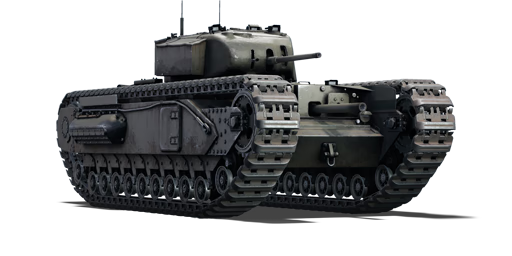The Churchill I (or just Churchill I) was introduced to British service in 1941 as an infantry tank to assist ground forces in World War II. The Churchill I emphasized strong armour and firepower for breakthrough missions. It had thick armour and was equipped with a dependable 2-pounder cannon and a 3-inch howitzer, allowing it to effectively engage enemy armoured vehicles and fortifications. However, its slow speed and mechanical reliability problems restricted its overall performance in combat. Churchill tanks served in various theaters, including Operation Torch and Operation Overlord, and served with the British Army until 1952. The tank was named in honour of John Churchill, a British general and royal.
Introduced in Update 1.69 "Regia Aeronautica", the Churchill I is one of the more capable heavy tanks of its rank. The tank has excellent frontal armour that can absorb and bounce shots. Tanks such as the Panzer III, T-34, M4 Sherman, and even the dreaded Panzer IV F2 can be blocked if angled. Very few tanks can deal with the Churchill I effectively from the front, such as the M10 GMC or Achilles. Its 2-pounder gun, however, is sub-par in dealing damage for its battle rating. It is of small calibre and has low penetration and damage. Use its very fast reload to make follow-up shots to finish off enemies. Its secondary howitzer is able to fire HE shells, however, due to their inefficiency, it is recommended to instead use it to launch smoke rounds to cover your team's advance or to smoke out enemy positions. The Churchill I, despite being a heavy tank, is quite fast and can turn just as swiftly via neutral steering. However, a driver must be skilled to utilise this to the tank's advantage, as turning while in forward motion is slower than the neutral steer, which the enemy can take advantage of when flanking. The Churchill's engine is also easily damaged due to its large size.















